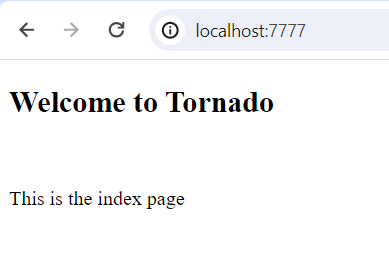Tornado is a Python Web Framework. When I was learning web development, this was my go to back-end library. Below are all the notes I have on my web learnings.
Folder structure
 root folder
root folder
- static
- templates
- index.html
- template.html
- app.py
App.py
This is the python back-end code
# Webserver stuff
import tornado.ioloop
import tornado.web
# route to index.html
class MainHandler(tornado.web.RequestHandler):
def get(self):
self.render('templates/index.html')
# r"/" == root website address
application = tornado.web.Application([
(r"/", MainHandler)
],debug=True)
# Start the server at port n
if __name__ == "__main__":
PortNumber = str(7777)
print(r'Server Running at http://localhost:' + PortNumber + r'/')
print(r'To close press ctrl + c')
application.listen(PortNumber)
tornado.ioloop.IOLoop.instance().start()Front-end code
The idea is to create a base html file named template.html and then build all other html files on top of the template. This made the html files much cleaner an easier to maintain.
template.html
<!DOCTYPE html>
<head>
<title>Tornado</title>
</head>
<body>
{% block content %}
{% end block %}
</body>
</html>index.html
Extends will import the template.html file and replace the block content with the header/paragraph section in the body.
{% extends "template.html" %}
{% block content %}
<h2>Welcome to Tornado</h2>
<br>
<p>This is the index page</p>
{% end block %}Here is how you run the application:
python app.pyHere is how the front-end looks like:

Here is how the back-end looks like:
